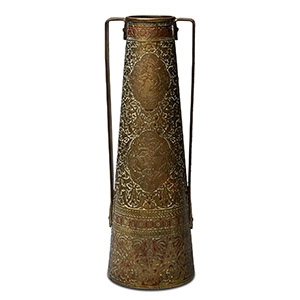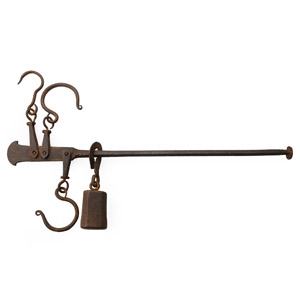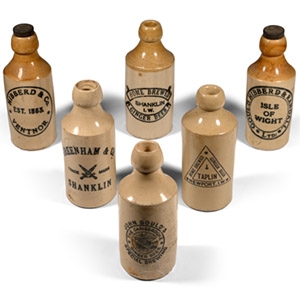Home > Auctions > 9 - 17 September 2025
Ancient Art, Antiquities, Books, Natural History & Coins
From the private collection of an East Anglian gentleman, 1970s-early 2000s.
This lot is accompanied by an illustrated lot declaration signed by the Head of the Antiquities Department, Dr Raffaele D'Amato.
From an Oxford, UK, collection.
Ex London, UK, gallery.
This lot is accompanied by an illustrated lot declaration signed by the Head of the Antiquities Department, Dr Raffaele D'Amato.
Private collection, London.
This lot has been checked against the Interpol Database of stolen works of art and is accompanied by search certificate number no.12818-241429.
This lot has been cleared against the Art Loss Register database, and is accompanied by an illustrated lot declaration signed by the Head of the Antiquities Department, Dr Raffaele D'Amato.
See Ogden, J., Diamonds, An Early History of the King of Gems, New Haven-London, 2018, p.197, no.58, for similar jewel.
Acquired on the UK art market.
Property of an East Anglia private collector.
This lot is accompanied by an illustrated lot declaration signed by the Head of the Antiquities Department, Dr Raffaele D'Amato.
Acquired on the UK art market in the 1990s.
From the Dr Ince collection, N.W. London, UK.
This lot is accompanied by an illustrated lot declaration signed by the Head of the Antiquities Department, Dr Raffaele D'Amato.
Private collection of a North London lady before 2000.
Property of a London, UK, gentleman.
This lot is accompanied by an illustrated lot declaration signed by the Head of the Antiquities Department, Dr Raffaele D'Amato.
Property of a London, UK, gentleman collector.
Accompanied by a copy of a Romanian export licence.
Accompanied by an academic report by Dr Raffaele D’Amato.
This lot has been checked against the Interpol Database of stolen works of art and is accompanied by search certificate number no.12466-229954.
This lot has been cleared against the Art Loss Register database, and is accompanied by an illustrated lot declaration signed by the Head of the Antiquities Department, Dr Raffaele D'Amato.
Cf. Popescu, G.A., Cristiani d'Oriente, spiritualità, arte e potere nell'Europa Post-Bizantina, Milano, 1999, fig.69, for similar; cf. also Baboș, A., ’Royal Doors of Maramures beyond their appearances’ in Museikon, a journal of Religious Art and Culture, 6/2022, pp.263-294, for similar doors and discussion.
The 'royal doors' (Greek: Ωραία Πύλη) mark the entrance to the iconostasis (wooden screen hiding the altar) in an Eastern Orthodox church.
From the private collection of a S.W.
London gentleman, acquired in the 1970s.
This lot is accompanied by an illustrated lot declaration signed by the Head of the Antiquities Department, Dr Raffaele D'Amato.
The most celebrated Sphinx in Egyptian mythology is the monument built near the pyramids as a protective symbol, to wish the pharaoh a peaceful afterlife. It has a leonine body and a human head. The Sphinx could be shown as male or female, depending on the pharaoh or queen it had to protect. The inclusion of sphinxes in temple complexes became a tradition lasting into the Roman period and Late Antiquity. Many pharaohs had their heads carved atop the guardian statues of their tombs, in part to show their close relationship with the powerful solar deity Sekhmet, a lioness. This cast bronze sphinx is a fine example of neoclassical sculptural art under the influence of Egyptomania and the renewed interest in the culture of ancient Egypt sparked by Napoleon’s Egyptian Campaign from 1798. At a time when only few could afford a trip to Egypt during the peak of Egyptomania contact could be made with Egyptian culture through literature, architecture and art. Particularly influential were Vivant Denon’s Voyage dans la Basse et la Haute Égypte, the Institute of Egypt's Description de l'Égypte, Robert Adams's interior decoration, Verdi’s Aida and the pedestal sphinxes protecting the obelisk of Tuthmosis III (Cleopatra's Needle).
From the private collection of a Canadian gentleman living in Essex, UK, formed since the 1920s-circa 1990.
Property of an Essex lady until the late 1990s; thence by descent.
From the private collection of an Essex gentleman since the late 1990s.
This lot is accompanied by an illustrated lot declaration signed by the Head of the Antiquities Department, Dr Raffaele D'Amato.
From the personal collection of a South West London gentleman since the 1980s.
This lot is accompanied by an illustrated lot declaration signed by the Head of the Antiquities Department, Dr Raffaele D'Amato.
From the private collection of an East Anglian gentleman, 1970s-early 2000s.
This lot is accompanied by an illustrated lot declaration signed by the Head of the Antiquities Department, Dr Raffaele D'Amato.
Ex German art market, 2000s.
Acquired from an EU collector living in London.
From the collection of a Surrey, UK, gentleman.
This lot is accompanied by an illustrated lot declaration signed by the Head of the Antiquities Department, Dr Raffaele D'Amato.
1705 - 1716 of 3897 LOTS

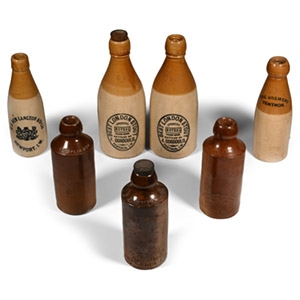



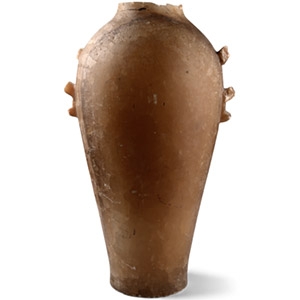

.jpg)
.jpg)
